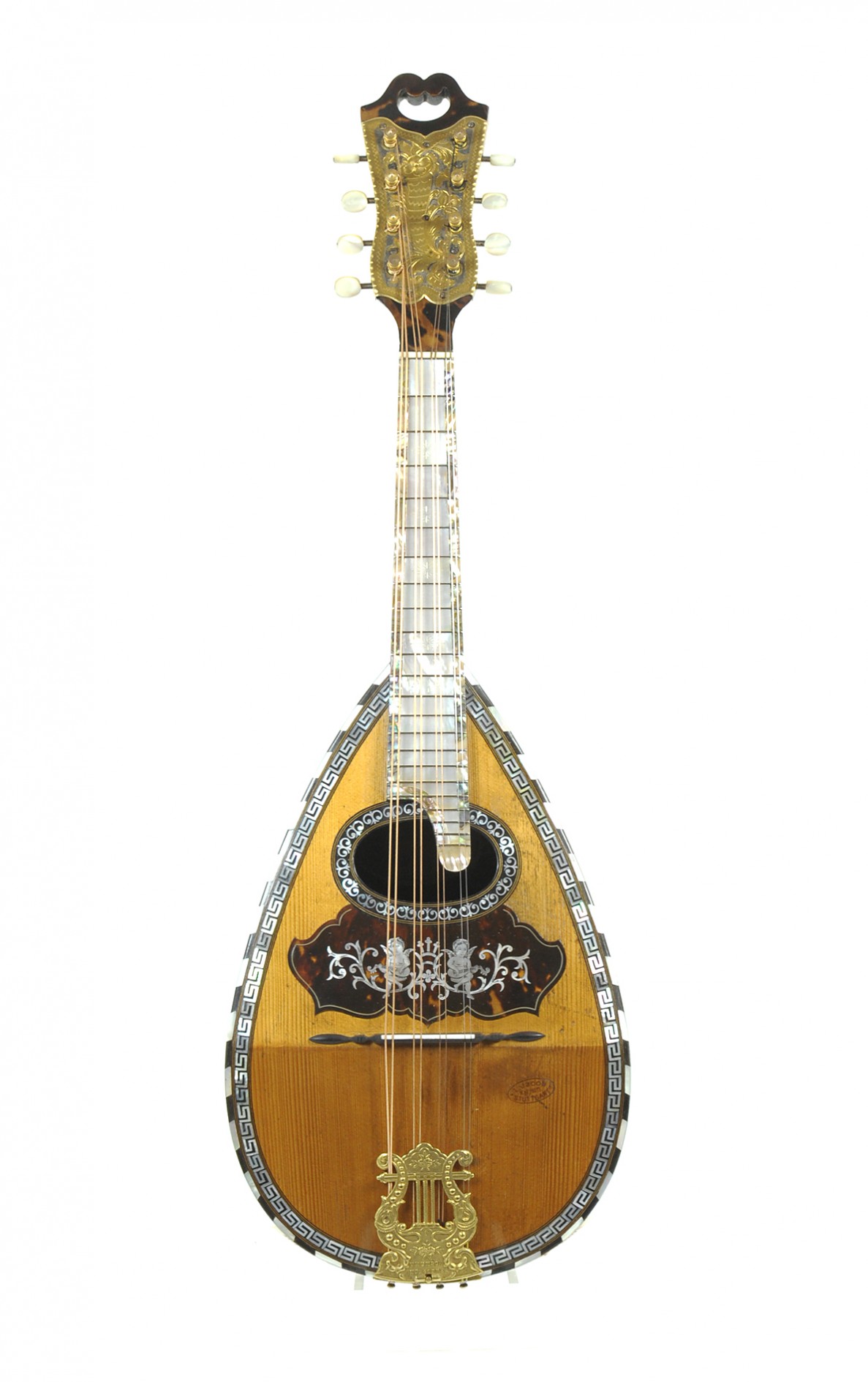Magnificent Italian roundback mandolin, Ermelinda Silvestri, circa 1900
This Neapolitan roundback mandolin, which was crafted around 1900 in Rome, is an outstanding illustration of the art of Italian instrument making. The rich ornamentation plays with every conceivable option of adding tasteful accents to enhance the classic model it is based upon. The finely engraved mother-of-pearl intarsia of the tortoiseshell strike plate is of exceptional...
This Neapolitan roundback mandolin, which was crafted around 1900 in Rome, is an outstanding illustration of the art of Italian instrument making. The rich ornamentation plays with every conceivable option of adding tasteful accents to enhance the classic model it is based upon. The finely engraved mother-of-pearl intarsia of the tortoiseshell strike plate is of exceptional quality: it shows two cherubs surrounded by baroque vines and playing the lute. Broad meander patterns along the edges of the top, the tortoiseshell sheath on the head and neck, and the mother-of-pearl inlay along the entire fingerboard all contribute to the lustrous aesthetic of this mandolin: even its tailpiece was meticulously crafted in the shape of a lyre. A closer look, however, shows even more excellent artisanal details which are less conspicuous but no less important. The back was crafted out of top-tier rosewood carved into 31 grooved ribs; the top, made of moderately- to finely-grained spruce, indicates that the instrument’s maker had a well-honed sensitivity to the material and the harmonious lines of the grain. This exceptionally lovely mandolin hails from the Ermelinda Silvestri atelier, a highly regarded business that was founded in the Sicilian city of Catania but had already expanded to Rome by 1900. In light of the international success that the stringed instruments from this atelier enjoyed, it is astounding that so little is known about its history. In addition to mandolins, Silvestri guitars are very sought after nowadays, especially by some collectors. The only other information this mandolin provides about its heritage is the brandmark from Levi Jacob, the Stuttgart music store and supplier to the royal house of Württemberg which was one of the leading names in southern German music culture at the turn of the century. At 330 mm, the mandolin’s mensur falls within traditional dimensions, whereas its rather large body (38 cm across) and long fingerboard with 22 frets clearly reflects the impact of modern mandolin-making standards, which were evolving during this era. After coming to us in surprisingly good substantial condition and crack-free, it has now been meticulously restored and made ready to play. The mandolin’s many compelling features include its outstanding playing characteristics and a bright, large, and open sound, rich in the finest Italian character. Sotheby's estimate 4,000 - 6,000 GBP (unrestored), this instrument has been restored at a cost of 1,000 EUR.
- Inventory no.
- 1703
- Maker
- Ermelinda Silvestri
- Provenance
- Rome
- Year
- c.1900
- Tone
- bright, open, large
- Length of back
- 31.8 cm

